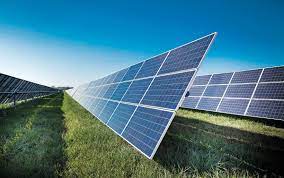Saona Island is known for many peculiarities that make it worthy of attention. In its 110 kilometers -twice the size of Manhattan, in the United States- it is home to a little more than 500 inhabitants and a rich biodiversity that make it part of the National Park of the East Cotubanamá, receiving about one million foreigners every year.
Since last December 19, Saona Island has had a solar energy park that currently produces 800 kilowatts, for a maximum generation capacity of 1.25 megawatts. This is expected to supply both the island’s residents and future businesses from hotel concessions.
The initiative is a private initiative of the Consorcio Energético Punta Macao (CEPM), a company that believes that the protected area has the potential to become a sustainable tourist destination.
“We made a cooperation agreement (with the Ministry of the Environment), where the service is provided (to the community). Currently, (they) did not have a continuous 24-hour energy service.
So, we have solar panels producing to the grid, and we also have a bank of storage batteries, which continues to provide the service during the night”, explained CEPM’s deputy development manager, Gabriel Rengifo.
After talking to journalists in the framework of the First Environmental Journalism Workshop, organized and sponsored by this consortium together with Ecored, the technician explained that the company already has 160 contracts “and growing with all the concession beach area” that they manage.
Community reaction
The development of the project has generated mixed opinions among community members who see the construction as a sign of development and among those who are concerned about the impact that the operation of the energy park could generate, both in the economic activity of its residents and in the island’s own ecosystem.
For beach cleaner Héctor Hernández, the renewable energy system represents a development. “Before, whoever had a small business had to use up to three gallons of gasoline, and even using three and four gallons had no light, so for me it has been an achievement,” he says.
Both he and the director of the Manojuan School, Miguelina Pereyra, agree that the installation of the solar panels was carried out on the land next to the residences of the Marina residents, an area that did not require the cutting of trees for the installation of the work.
An artisan from Manojuan -who did not want to give his name- indicated that the work clearly represents an improvement in the supply of energy demand. However, he fears that the perforations that have been made with earth compressors for the subway wiring connections will damage the island’s coral soil.
For artisan and fisherman Luis Javier Cordero (Félix), the Ministries of Environment and Tourism should advocate for the care of species that are threatened by illegal fishing such as the lambí, lobster, parrot fish or grouper. In addition, he expects them to expedite the environmental permits required by the residents themselves to repair their homes.
Use and disposal of protected areas
Article 14 of the Protected Areas Law 202-04 allows a national park (such as the one in the East) to be used for scientific, educational, recreational, and tourism purposes. For the latter, ecotourism infrastructures are allowed, as long as they comply with the management plan that the Ministry of Environment prepares for each protected area.
The article also calls for the avoidance of intensive exploitation and occupations that alter the ecosystems, in accordance with Law 64-00 of the Environment, which considers the cutting of trees, the death of endangered species, the dumping of waste or toxic liquids, and non-compliance with regulations to be crimes.
Source: Mitur.gob.do
Learn more: DESTINATIONS

